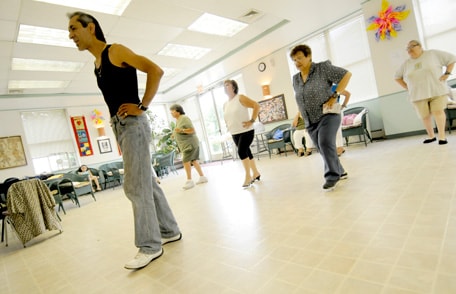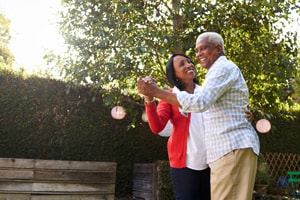Dance Your Way to Better Brain Health

Join a dance class to exercise your brain and body.
Facts About Alzheimer’s Disease
Exercise is not only good for your body, it’s good for your brain! Sticking to a regular workout plan can be tough, but including activity in your routine doesn’t need to be boring. Scientists have found that the areas of the brain that control memory and skills such as planning and organizing improve with exercise.1,2 Dance has the added dimensions of rhythm, balance, music, and a social setting that enhances the benefits of simple movement – and can be fun!
The Science of Dance
At the University of Illinois at Chicago, through the CDC-funded Prevention Research Centers’ Healthy Brain Research Network, researchers designed a Latin ballroom dance program for older sedentary adults. Participants in the program, BAILAMOS©, reported improvements in memory, attention, and focus.3 In a separate ballroom dance program, older people experiencing mild cognitive impairment improved their thinking and memory after a 10-month-long ballroom dancing class.4
So, how can you get moving?
- Sign up for a dance class and invite your friends to join. Find classes at your local community college, YMCA, dance studio, or community center.
- Try dancing at home by following along with a DVD or videos on YouTube. Easy-to-follow, free exercise videos are available at the National Institute on Aging’s YouTube channel.
- For an extra challenge, try using small weights to build strength. Keep a 2-pound or 5-pound weight in each hand while doing your dance routine. For more ideas on strength exercises, visit the Exercise and Physical Activity page on the NIH website.

Dancing can improve your brain health.
Help for Caregivers of People with Alzheimer’s
Are you a caregiver for someone with Alzheimer’s disease or a related dementia? You can help the person you care for get moving, too.5
- Split dance moves and exercises into small, easy-to-follow steps. Use exercise videos and follow along with the person you’re caring for.
- At first, try shorter 5- or 10-minute mini dancing sessions to slowly build endurance.
- Take breaks when needed and make sure you are both drinking plenty of water.
- Whitmer, R. A., Sidney, S., Selby, J., Johnston, S. C., & Yaffe, K. (2005). Midlife cardiovascular risk factors and risk of dementia in late life. Neurology, 64(2), 277-281.
- National Institute on Aging. (2017). Featured Research: Moderate physical activity linked to increases in metabolism across brain regions.
- Marquez DX, Wilson R, Aguiñaga S, et al. (2017). Regular Latin Dancing and Health Education may Improve Cognition of Late Middle-Aged and Older Latinos. Journal of aging and physical activity, 25(3), 482-489. Doi:10.1123/japa.2016-0049.
- Lazarou I, Parastatidis T, Tsolaki A, et al. (2017). International ballroom dancing against neurodegeneration: A randomized controlled trial in Greek community-dwelling elders with mild cognitive impairment. American Journal of Alzheimer’s Disease & Other Dementias, 32(8), 489-499. Doi:10.1177/1533317517725813.
- Guzmán-García, A., Mukaetova-Ladinska, E., & James, I. (2013). Introducing a Latin ballroom dance class to people with dementia living in care homes, benefits and concerns: A pilot study. Dementia, 12(5), 523-535.